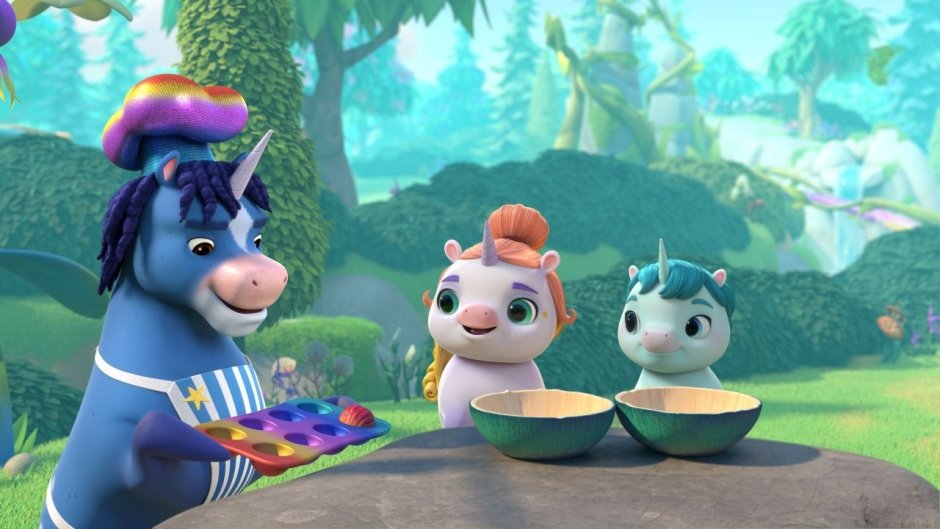Not Quite Narwhal is out today June 19 on Netflix worldwide! We spent nearly two years full-time writing songs and music for Kelp’s epic adventures between land and sea. The series is co-produced by DreamWorks Animation / Doberman Pictures and is based on the best-selling books by Jessie Sima (available here). This is the official blurb:
Curious and fun-loving Kelp has always believed he’s a narwhal like the rest of his family under the sea, until the day he makes the most amazing discovery — he’s actually a unicorn! Rather than choose one or the other, Kelp embraces being both and figures out how to navigate his two worlds: the ocean and land.
Above: sweet Kelp from the books by Jessie Sima.
Kelp’s Song
The first ever piece we wrote for the series was for NQN110 – Kelp’s Song. In this episode, Kelp hears a song in his head and then makes a plan to recreate it using the Unicorn-estra (all of the unicorn’s razzles – that is, the “blowing instruments” that they can play with their unicorn horns) and a selection of magical musical plants from Glimmer Glen.
Musical sequences are written in pre-production so the animation can be timed to the tempo of the music and the characters can be animated to match their instrument performances. As you can imagine, these scenes can be complex combining specialties from many different departments - though some, like board artists, we won’t speak with directly at all during the process!
One way we communicate ideas is by producing short music videos. We made the video below to help demonstrate the rhythmic sounds selected for the plant instruments and the brass/woodwinds selected for the unicorn razzles, and how they layer together to form the composition. The second half demonstrates a possible timing of how the music could fit in with the dialog and action cues from the script.
After being approved in pre-preproduction the sequence moved into production. We did another pass on the animatic (a black & white, sketched, temporary animation) at which point the music was extended over the cut and Scallop’s cute sing-along melody was added. Then one more clean up in post to bring the instrumentation in-line with the score… and we were locked! Here is the final scene!
Episode NQN110 was written by Nicole Belisle, directed by Nuranee Shaw, with storyboards by Chiara Ferrari. Featured musicians: Jonathan J. Golko - Pixie’s flute and Juni’s piccolo, Christian Behrens - Ollie’s bass trombone, and Ryan Lofty - the Genericorn’s trumpets.
Riki’s Greenhouse Musical
The complex pieces are without question our favorite thing to do. And we were stoked to be assigned more! In episode 20, Riki introduces the kids to the greenhouse plants and sets up the basic exposition of the episode - every plant is unique and needs unique care to thrive. This was originally a dialog scene and later re-envisioned as a musical. It was fun and challenging to adapt the dialog into lyrics, write a unifying hook, create sounds for the plants, and produce it all into one cohesive sequence.
Below is our initial pitch for the scene and the final!
We didn’t know what the plants looked like yet and the guess sketches are pretty entertaining.
The final scene! It’s just fantastic.
Episode NQN120 was written by Darcie Little Badger, directed by Doron Mier, with storyboards by Sophie Whittingham. Katy Sullivan, Paralympian and Tony-Award nominated actress, guest stars as Riki.
Creating sparkle without synths
After all of the pre-production sequences were wrapped we moved into post for score. Score is the “background music” added after the animation has been completed. Unlike the magical plants and razzles, score is non-diagetic, meaning it exists outside of the world of the characters and is there for the purpose of adding a layer of storytelling for the viewing audience watching at home on Netflix.
The main idea the team wanted incorporated into the score was the feeling of a warm hug, and two separate palettes to sonically identify underwater with the narwhals vs on land with the unicorns. Here are some slides from our v1 pitch deck:
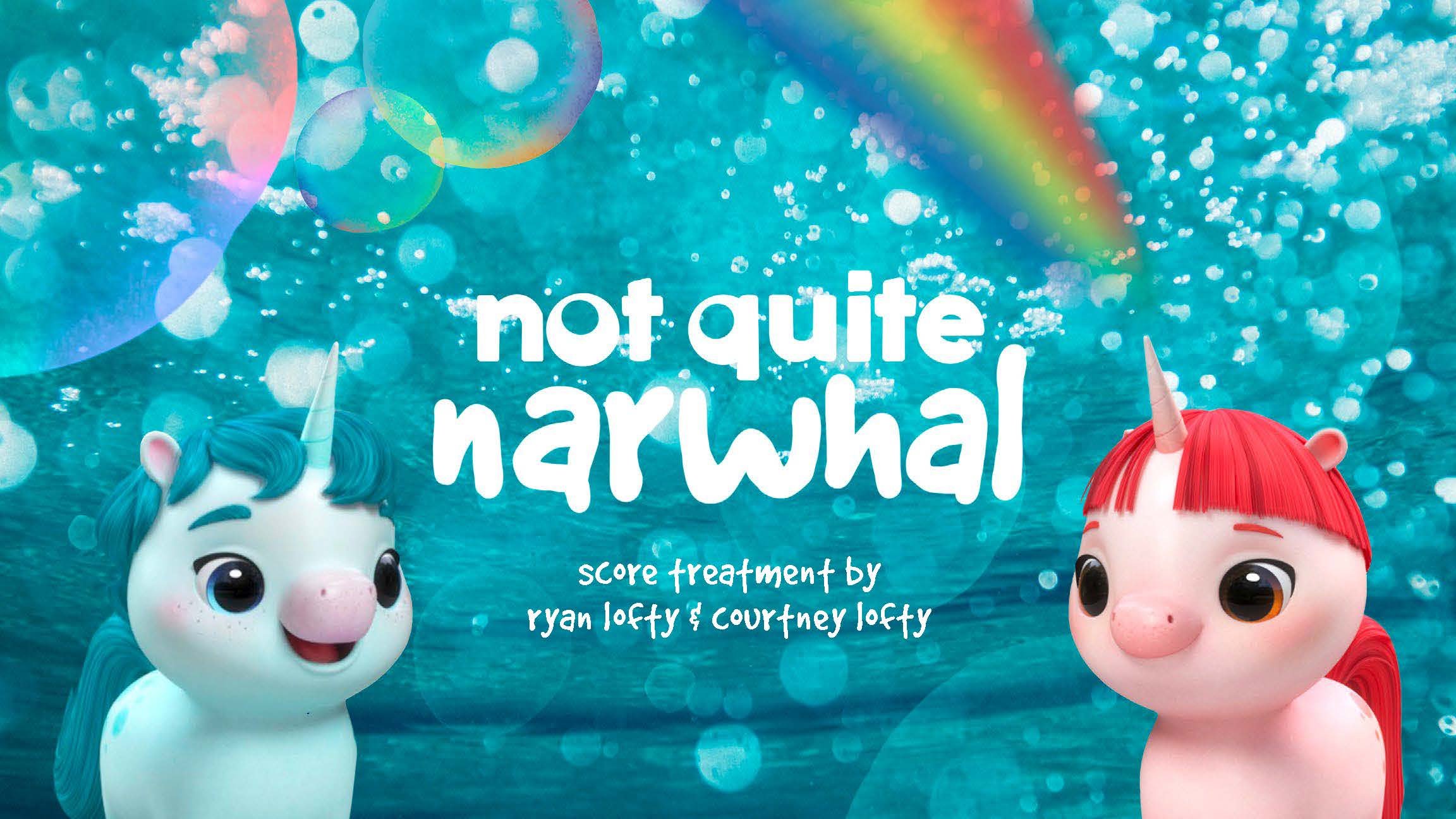

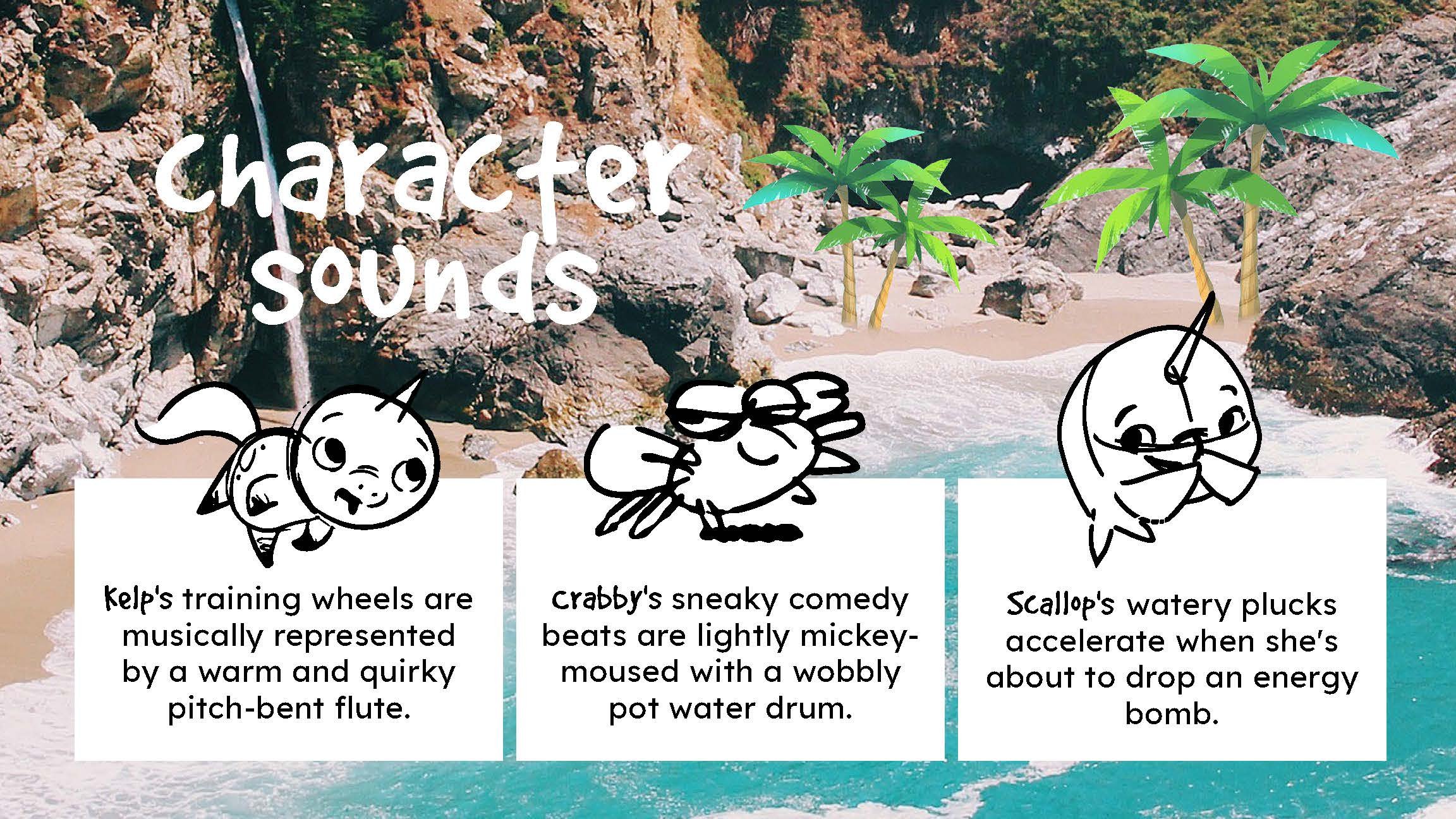

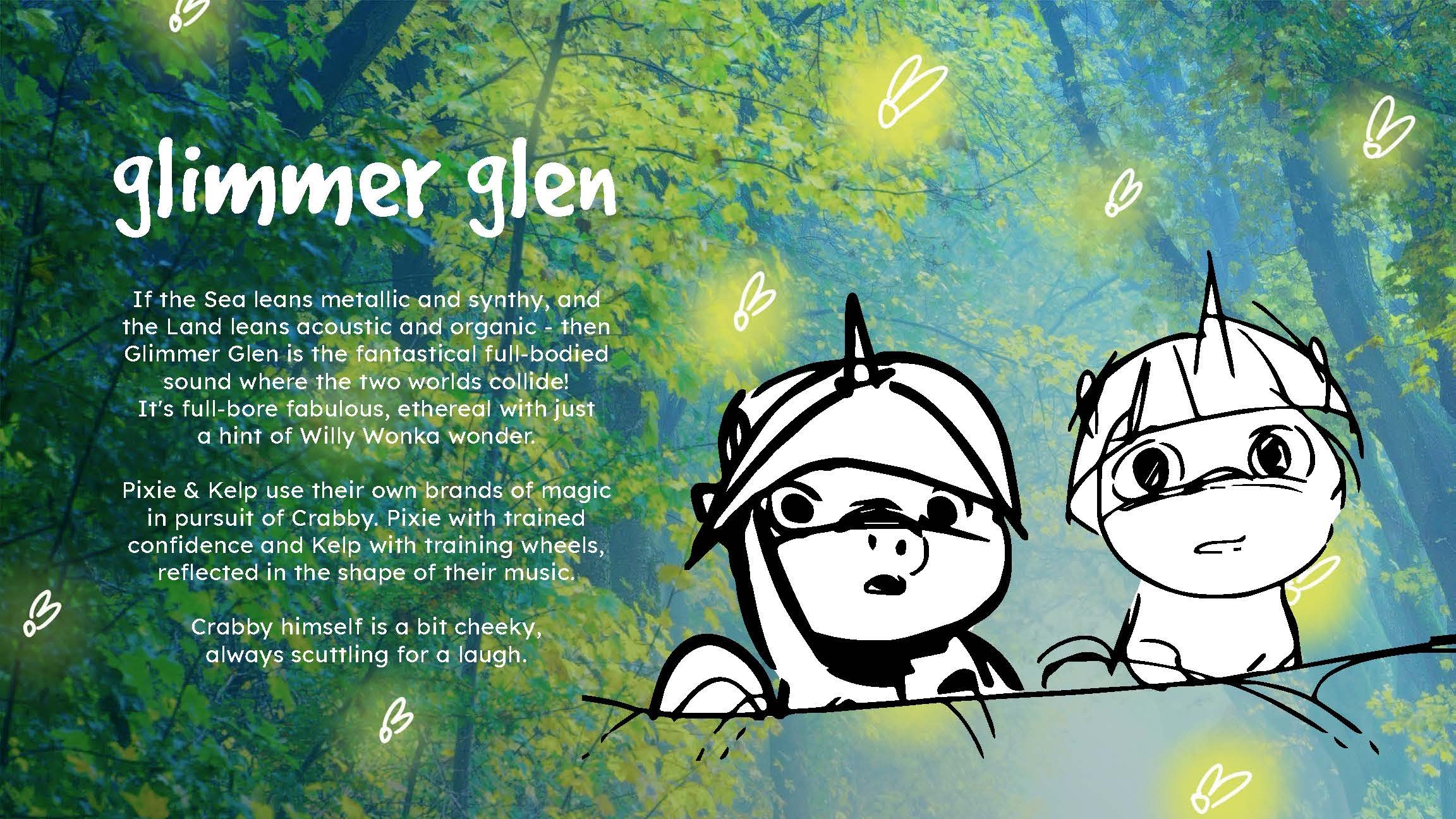
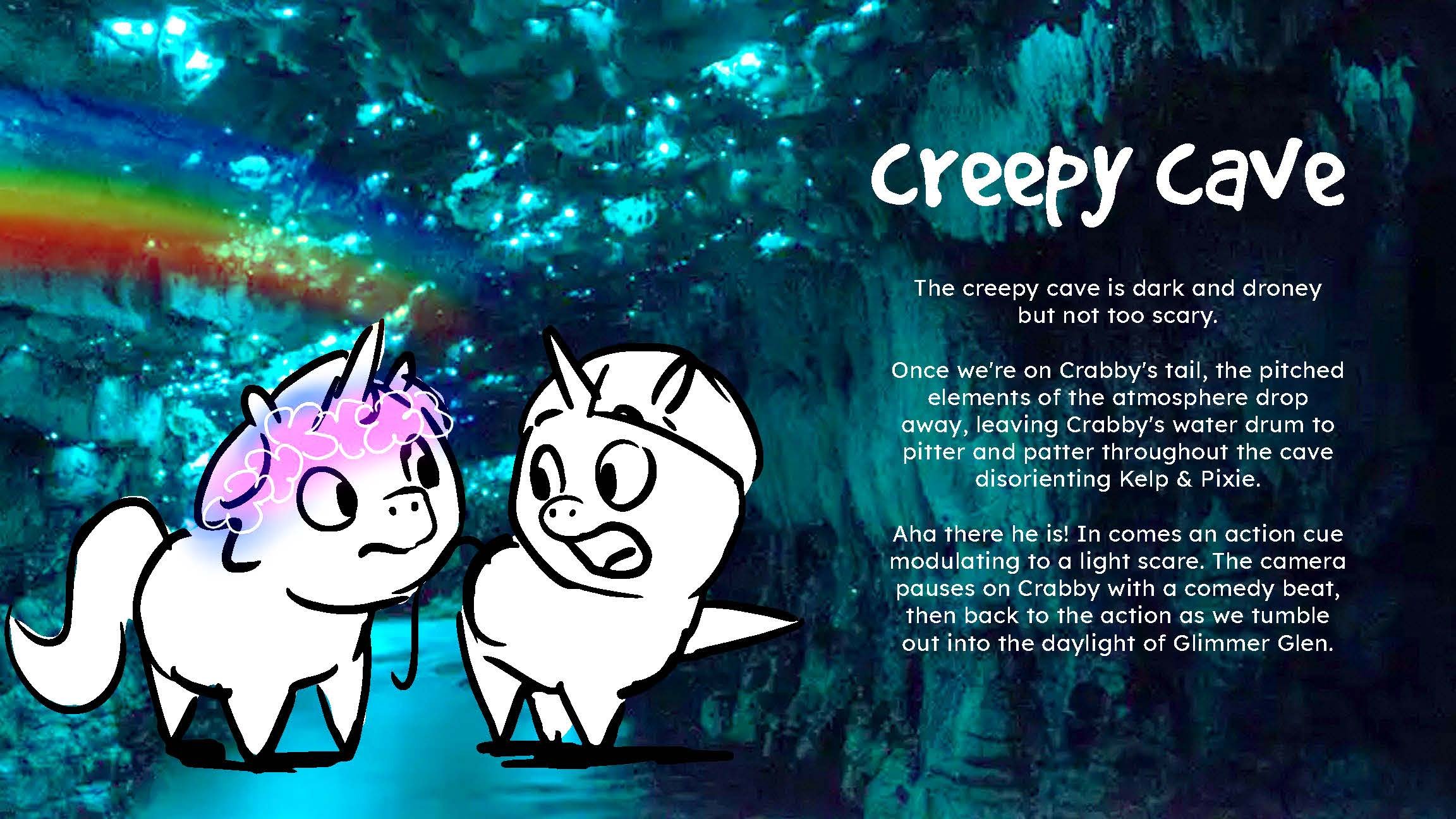
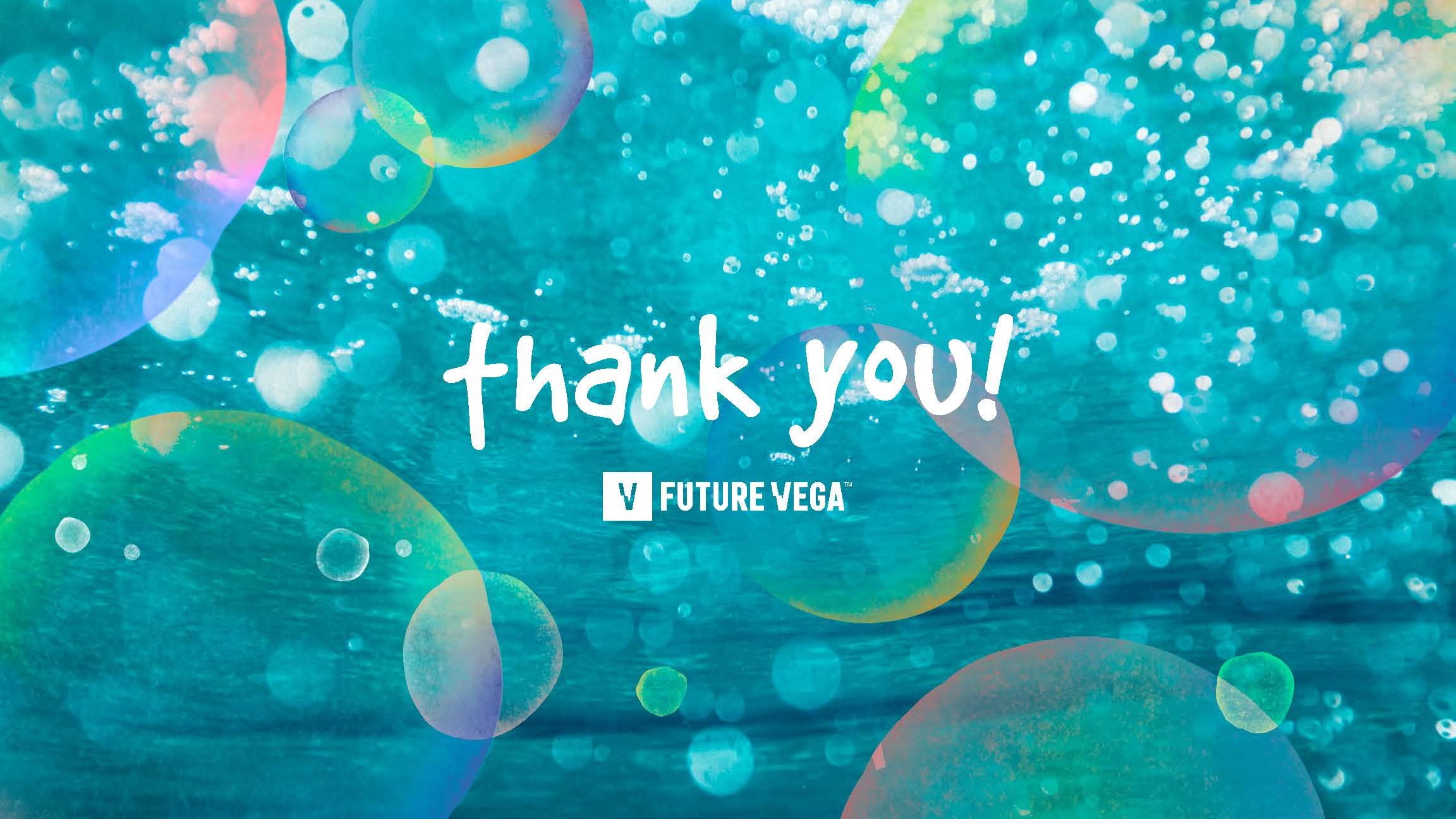
Did our ideas stick? Kind of!
In the first ideation of the score, there was talk of incorporating synths and electronic beats, but over time this gave way to something more tactile. The instruments that felt right for the series were small and intimate: a family of ukuleles, mandolin, acoustic guitar, pan flutes, cajon, and stacked vocal harmonies. Viv from DreamWorks had the idea to swap some of the original sparkly synths with prepared piano and this became a core sound through the whole series. Instead of using electronic instruments, Alex Nickson suggested using electronic processing on acoustic instruments. Crystallizer by Soundtoys and Landforms by Slate + Ash became mainstays.
Here are a few examples of what the sounds for the two worlds came to be:
Underwater
Unicorn Land
Kelp’s Kinesthetics
Another goal of the music was to highlight Kelp as a kinesthetic learner who embodies rhythm and processes his emotions through movement. Often you will see Kelp begin to tap a rhythm and unite those around him in dance. Some of these sequences were made in preproduction & some in post - to help connect them all we developed a recurring woodblock sound for Kelp’s tapping.
Here are a few examples:
Can You Feel It?
One of Kelp’s kinesthetic dances was actually one of our original test scenes! This was our pitch to demonstrate how rhythm could be used to drive the story. In our usual cheeky fashion we “scored” the scene with a song. An instrumental version of the song ended up becoming the end credits and much later, the launch trailer music.
“Can You Feel It?” lyric sheet from the OG pitch deck. While we were recording this a pipe burst and water started gushing out of the walls of the studio. It was not the way we envisaged land and water meeting. Ba dum tish.
Music SFX
A first for us! We also got to contribute to the SFX of the series. Just as the plants in Riki’s Greenhouse and Glimmer Glen make musical sounds, the team determined other elements of unicorn land should have musical SFX as well - particularly unicorn spark magic and Leroy’s emoji. These elements are made from instruments and instrument fx and timed/pitched in relation to the score to give the effect the characters are driving the magic in their environment. Some are doubled with practical effects by the SFX team for a truly unique end result.
Check out a sample of the music sfx samples here:
Character & Environment Palettes
For preschool series we aim for a certain amount of repetition to help direct the young audience’s attention to recurring characters and environments. Also - it’s just fun! Here are some of the special people and places that received unique sounds:
Riki’s Greenhouse
Glimmer Glen
Chef’s Cooking Cart
Ollie’s Meditation Music
Tutu’s Spacey Synth
Crabby’s Udu Scuttle
Kelp’s Theme
And of course, Kelp. Remember Kelp’s Song from earlier? Over time this became his theme! In the tradition of leitmotif it represents both Kelp as a character and storytelling moments where he uses his knowledge of both land and sea to solve a problem. It’s the single most-referenced melody in the entire series and appears everywhere from the DreamWorks logo, to dance beats, to sweeping orchestral renditions.
It also appears… in these crew gifts we made for the holidays!
If you can believe it, we edited this down. These are the main building blocks used to create the music but there is so, so much more: an adventure musical performed by the kids and Tony Award-Winner James Monroe Iglehart, an extended orchestral “whale waltz,” a festival full of unicorn band beats… but you will have to check those out with your family on Netflix!
Thank you so much DreamWorks music —Alexandra Nickson, Viv de Aguiar Buff, Lauren Vogel (and previously Frank Garcia, Clare Yezerski and Diana Lopez)— for having us. We met bi-weekly and spotted with our wonderful EPs Nakia Trower Shuman, Sarah Katin, and Brian K Roberts. Also from DreamWorks - Script Supervisor Kalee StClair, Voice Director Mary Elizabeth McGlynn, Exec in Charge Pete Cacioppo, VP of Development Vanessa Taylor Sands, and Head of Development Teri Weiss. From Doberman, Supervising Producers Dallas Parker and Craig Roberts, Art Director Garnet Syberg-Olsen, and Post Supervisor Andy Youssi. And to the mix team at Dick & Rogers who had to make sense of the sheer amount of musical elements this show featured - thank you!!
Not Quite Narwhal songs and score were written and produced by Ryan Lofty & Courtney Lofty.
Additional music by Brandon Liew.









